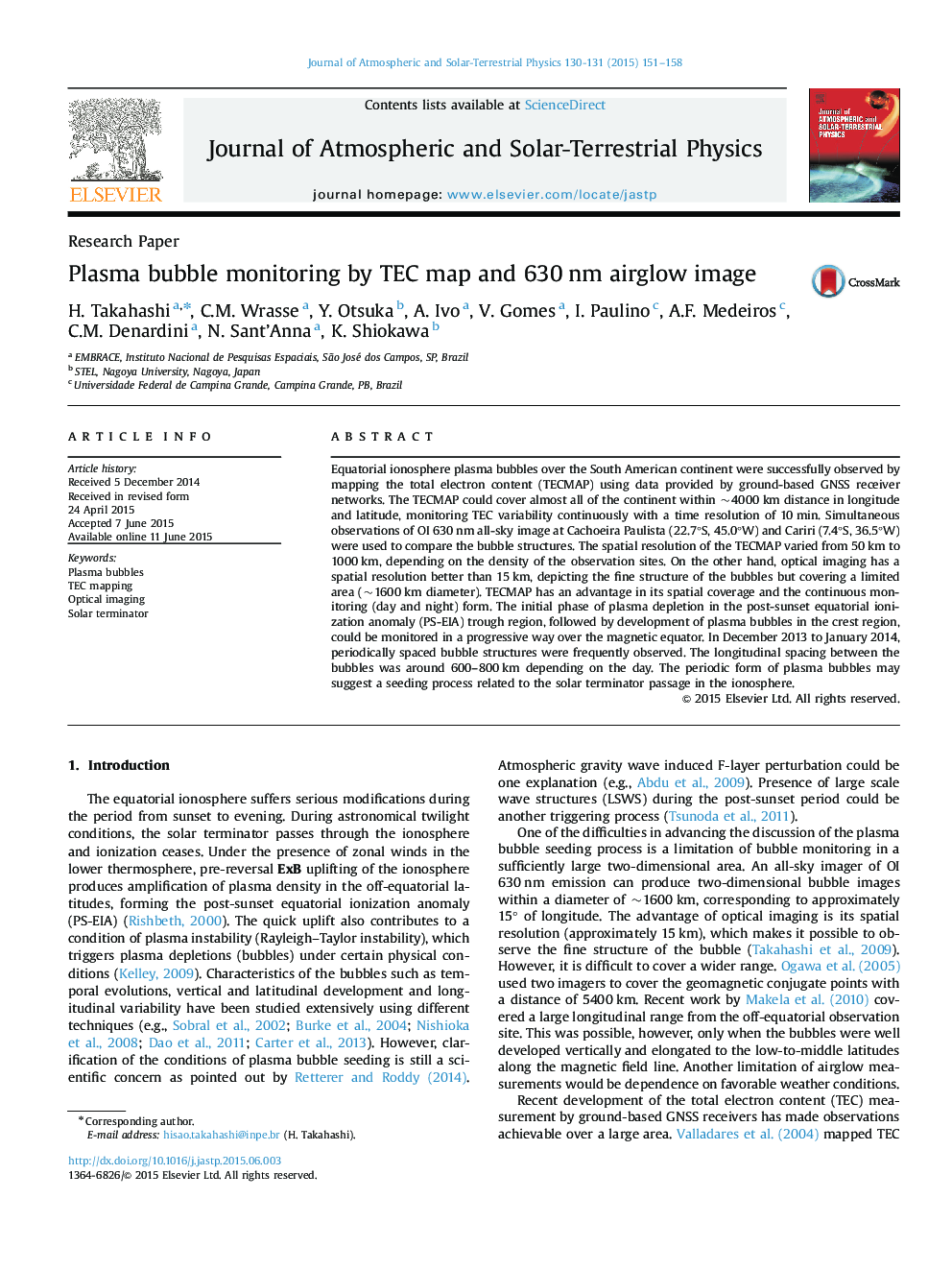| کد مقاله | کد نشریه | سال انتشار | مقاله انگلیسی | نسخه تمام متن |
|---|---|---|---|---|
| 8140031 | 1523613 | 2015 | 8 صفحه PDF | دانلود رایگان |
عنوان انگلیسی مقاله ISI
Plasma bubble monitoring by TEC map and 630Â nm airglow image
دانلود مقاله + سفارش ترجمه
دانلود مقاله ISI انگلیسی
رایگان برای ایرانیان
کلمات کلیدی
موضوعات مرتبط
مهندسی و علوم پایه
علوم زمین و سیارات
فیزیک زمین (ژئو فیزیک)
پیش نمایش صفحه اول مقاله

چکیده انگلیسی
Equatorial ionosphere plasma bubbles over the South American continent were successfully observed by mapping the total electron content (TECMAP) using data provided by ground-based GNSS receiver networks. The TECMAP could cover almost all of the continent within ~4000 km distance in longitude and latitude, monitoring TEC variability continuously with a time resolution of 10 min. Simultaneous observations of OI 630 nm all-sky image at Cachoeira Paulista (22.7°S, 45.0°W) and Cariri (7.4°S, 36.5°W) were used to compare the bubble structures. The spatial resolution of the TECMAP varied from 50 km to 1000 km, depending on the density of the observation sites. On the other hand, optical imaging has a spatial resolution better than 15 km, depicting the fine structure of the bubbles but covering a limited area (~1600 km diameter). TECMAP has an advantage in its spatial coverage and the continuous monitoring (day and night) form. The initial phase of plasma depletion in the post-sunset equatorial ionization anomaly (PS-EIA) trough region, followed by development of plasma bubbles in the crest region, could be monitored in a progressive way over the magnetic equator. In December 2013 to January 2014, periodically spaced bubble structures were frequently observed. The longitudinal spacing between the bubbles was around 600-800 km depending on the day. The periodic form of plasma bubbles may suggest a seeding process related to the solar terminator passage in the ionosphere.
ناشر
Database: Elsevier - ScienceDirect (ساینس دایرکت)
Journal: Journal of Atmospheric and Solar-Terrestrial Physics - Volumes 130â131, August 2015, Pages 151-158
Journal: Journal of Atmospheric and Solar-Terrestrial Physics - Volumes 130â131, August 2015, Pages 151-158
نویسندگان
H. Takahashi, C.M. Wrasse, Y. Otsuka, A. Ivo, V. Gomes, I. Paulino, A.F. Medeiros, C.M. Denardini, N. Sant'Anna, K. Shiokawa,